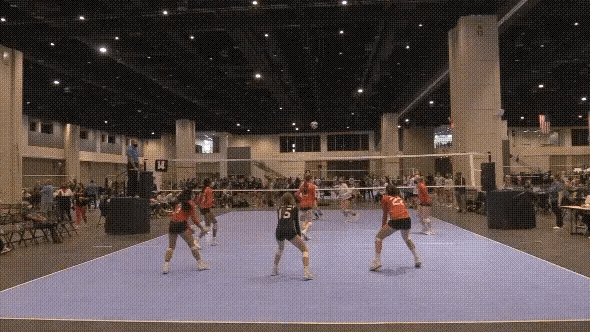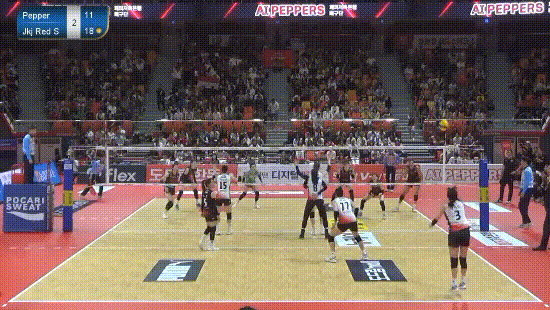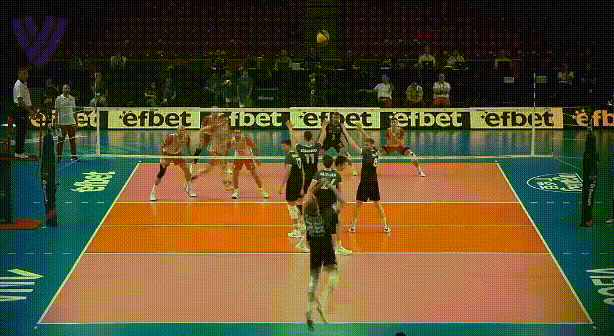SmarterVolley Systems - Pull Part 2
Opponent Adjustments
If you’re anything like me, it seems like summer just started, yet the fall season is here for many teams. If you’re a high school girls coach, you’ve either just started pre-season or are about to. The NCAA women’s season will be underway shortly. So for the fall, I’m shifting to a systems focus. What do I like to teach from a systems perspective? How do these systems work at different levels — high school/club, NCAA, pro, etc.?
This article series is probably the most detailed and technical non-statistics-related article series I’ve ever put together. If you’ve been a free subscriber and have needed a push over the edge to subscribe, this would be a good time!
Another note: these articles are long, and very video-heavy. There’s a lot of example video here. Sometimes that causes them to get laggy in your email app, so you might want to click the article title above and open in your browser.
And final note: I like to use clips from men and women, pro/uni/club/school, etc to illustrate concepts. Sometimes the idea is the same between a high school girl and a pro guy and the only difference is the power and level of execution. Sometimes the principle is the same but there are important tweaks that are necessary between different levels. I use some clips from teams that I’ve coached, some clips from teams that I didn’t coach but know their systems, and some clips from teams that I only know via video. So don’t take it that when I show a clip of a team that they use the exact same terminology, teaching points, etc that I do.
SmarterVolley Systems Series Articles
Push
Pull
The Pull series article got pretty long, so we didn’t get too much into how the rest of your offense compliments your middle attacker, or how to respond to opponent adjustments. So… let’s do that now!
Opponent Adjustments
I do in-person events for clubs, high school, and college programs. I also do consulting calls with programs of all levels. When we talk offense, I emphasize that we know a lot about how the other team will defend us before the match even starts. There’s just not that much variety in potential defensive schemes. As the level gets really high, the defensive team can disguise their scheme a bit by shifting late, and they can mix up their defensive scheme frequently to make them less predictable. But even at that level, there’s only so much variance.
Many players have never even taken 5 minutes to sit and think, “okay, if the opponent makes X adjustment, what would we do in response?” There’s often value to be found in the category of: things my players have never thought about. As I say it in my clinics:
Broadly speaking, every team will play 3 blockers: a middle blocker and left/right-side blockers. The middle blocker will either stay neutral or follow the play. The wing blockers will either pinch in more or spread out more. Every team will play 3 back-court defenders with a middle-back deeper and wing defenders shallower. Some teams will play more to the perimeter of the court and some will bunch more to the interior of the court. Some teams will rotate and follow the play and some won’t. That’s about it.
And it’s important to note that any adjustment that makes a defense stronger in one area makes that defense weaker in another area. Therefore, when a defense adjusts to make it harder for us to do A, it will now be easier for us to do B or C.
Therefore:
For every opponent defensive adjustment, there’s:
A setter (or, at some levels: pipe) attack that opens up.
Something our middle can do.
Something that opens up on the pins.
Let’s look at blocking adjustments, in particular, against our Pull series of offense.
Offensive Package v Fronting
When the other team starts following your middle, the classic play is just to reverse the ball and set counter-flow.
A lot of times you don’t need to overthink it. Setting counter-flow works at all levels of the game!
As soon as the middle starts to follow the Pull to her left, there’s no way she can get back in on a tempo ball to the outside. When middle blockers get highly-interested in the middle hitter, you can’t go wrong with just setting the pin an in-rhythm ball to attack to daylight.
For sub-elite teams, a setter dump (even from the floor) can be an effective way to burn teams that front/follow. When middles are moving horizontally, they lose track of the setter dump.
I often use that clip as an example. The middle isn’t running a Pull (she’s running something behind), but I think it nicely illustrates the point: when the middle blocker starts shifting horizontally, she’s not in a great position to jump vertically. Thus: the setter can attack aggressively.
At the high school level, even setting over from the floor can be effective when the other team is highly interested in the middle attacker.
At the elite level, dumps from the floor aren’t going down. But the pipe can become a bigger factor and the classic quick/bic is an example of the stuff you can run over top of a Pull.
The final option, which also becomes more important at higher levels of play is some sort of drifting route by the middle. I call this sort of action a Pop:
Okay so… what if you’re coaching more normal humans instead of the freakiest athletes on the planet?
Keep reading with a 7-day free trial
Subscribe to Smarter Volley by Joe Trinsey to keep reading this post and get 7 days of free access to the full post archives.






